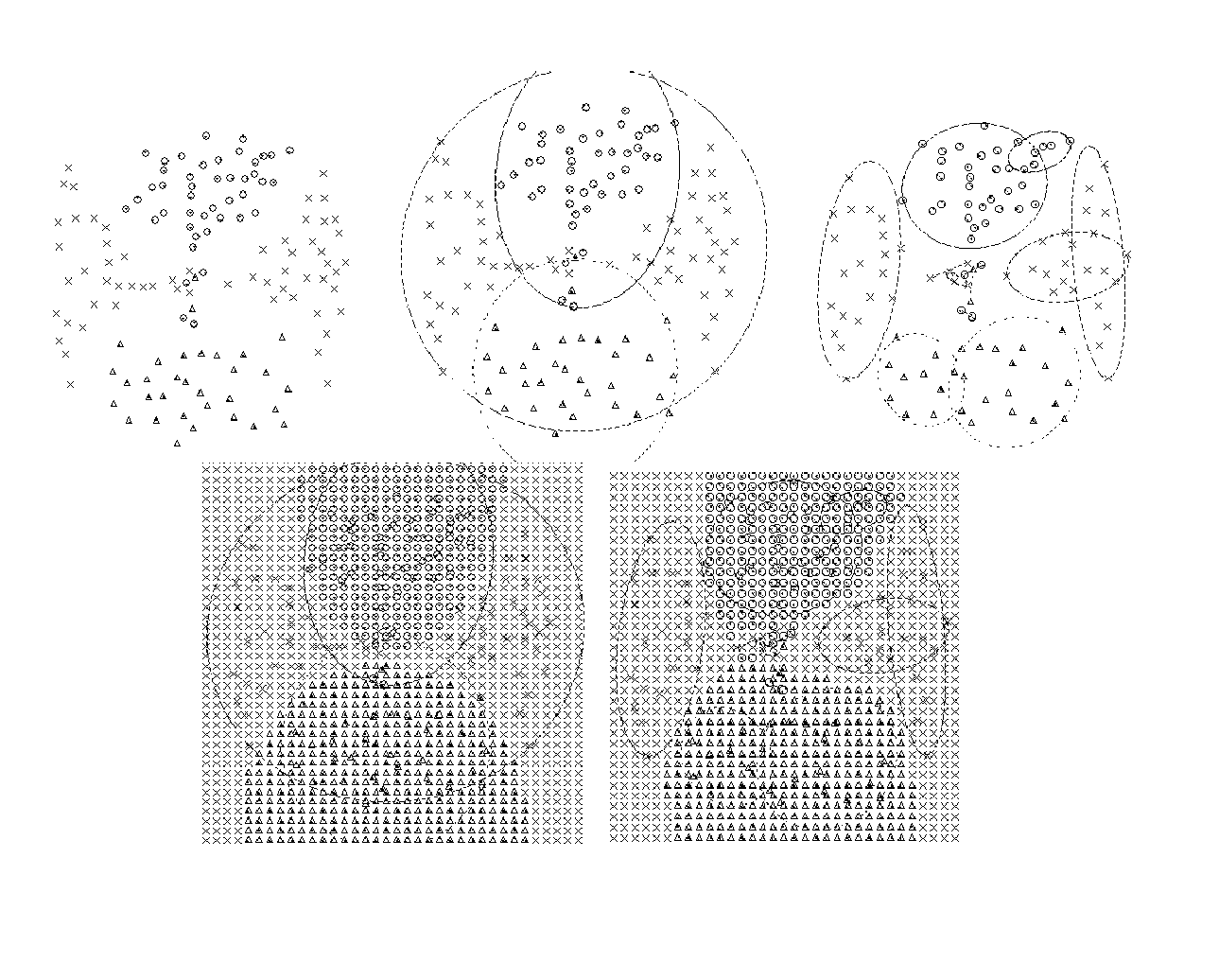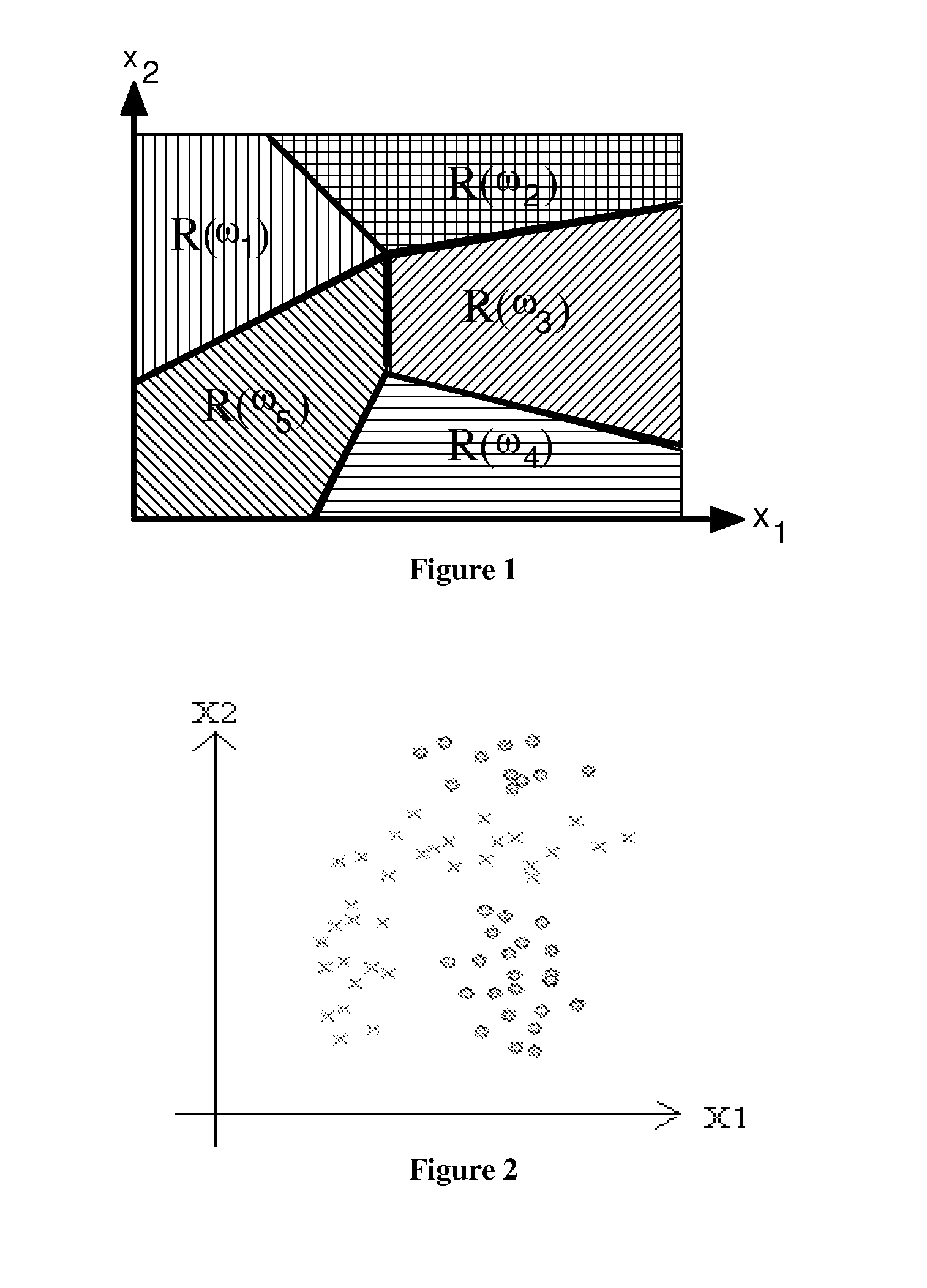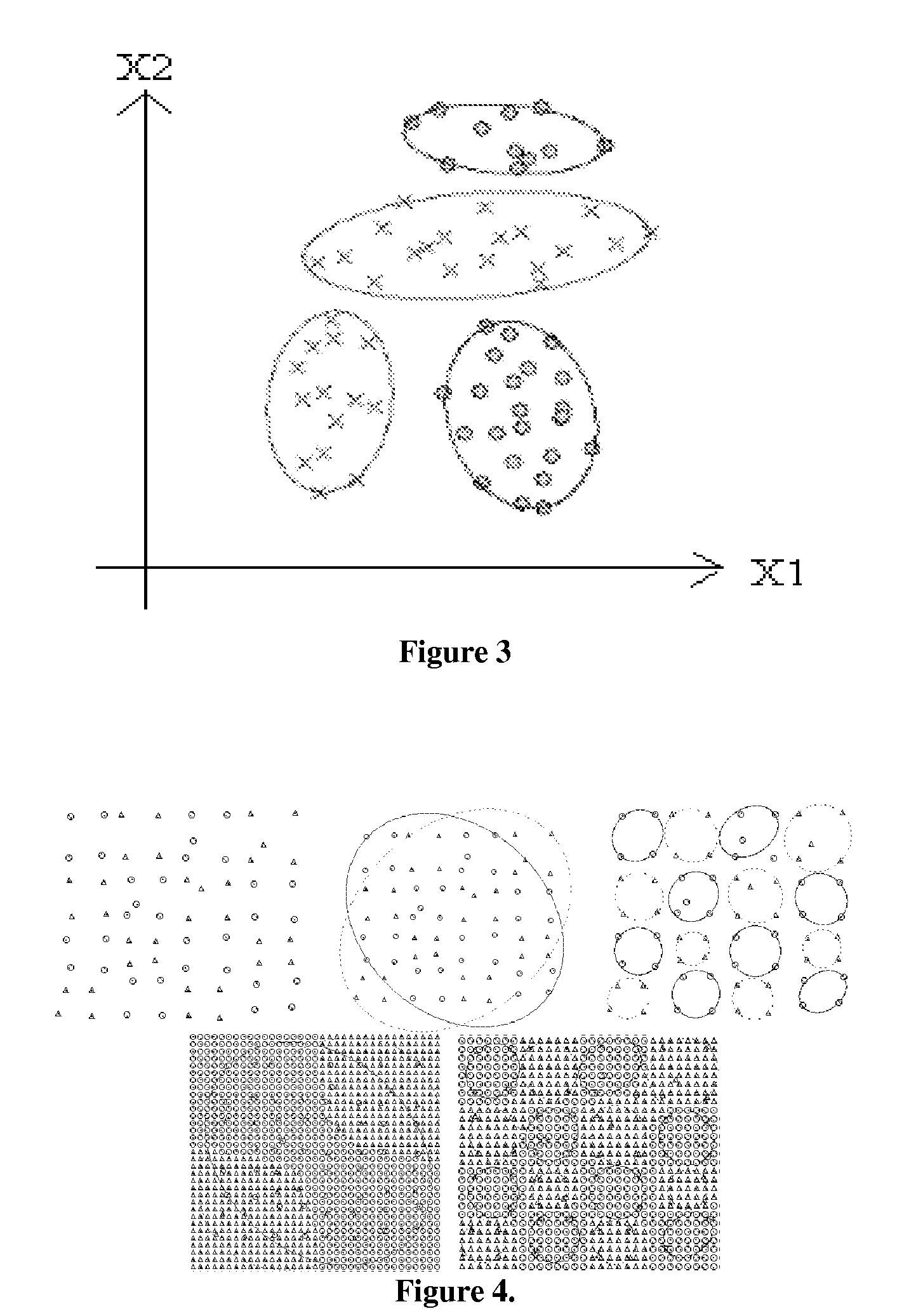Apparatus and method for organization, segmentation, characterization, and discrimination of complex data sets from multi-heterogeneous sources
a multi-heterogeneous source, complex data technology, applied in the field of data clustering technique, can solve the problems of inability to effectively manipulate data, inability to use coding and encryption techniques in most cases, and high-order non-linear data models that are typically too complicated for computation and manipulation, and achieve reliable decision-making
- Summary
- Abstract
- Description
- Claims
- Application Information
AI Technical Summary
Benefits of technology
Problems solved by technology
Method used
Image
Examples
example 1
Clustering Capability
[0116]FIGS. 4-6 show that: (1) Data points are grouped into hyper-ellipsoids, (2) These hyper-ellipsoids are split, the size of the hyper-ellipsoids reduces, in a way that data points in each division getting purer gradually, functioning like a vibrating sieve (forming smaller but less mixing bulks of data); (4) Small sized hyper-ellipsoids representing singular or irregular data sets that should be sieved out; and (5) Large sized hyper-ellipsoids containing regularities of the corresponding data type.
[0117]FIGS. 4-6 demonstrate that even if the data sets are very much mixed, the clustering moment-drive mini-max clustering algorithm is still capable of dividing them with multiple (>2) sub-divisions.
example 2
Classification Capability
[0118]FIGS. 7 and 8 show that data points are grouped into hyper-ellipsoids. In FIG. 7, data points are distributed in a mix of irregular shapes.
[0119] In FIG. 8, data points are in three categories distributed in a ring structure. This is generally considered difficult cases to discriminate in traditional data discrimination approaches.
[0120] Table 1 shows the test results of the algorithms on the above training sets. It lists the number of data points for each class in the set, the number of hyper-ellipsoid clusters generated by the algorithm, and the classification rate for each class of the data points by the resulting classifier in each case. Note that multiple numbers of Mini-Max hyper-ellipsoids are generated automatically by the algorithm.
TABLE 1Testing results of the sample sets.# of# ofTestingdata pointshyper-ellipsoidsDiscriminationsetin each setgeneratedrate (%)T0118, 20, 6 9100, 100, 100T0234, 33, 1212100, 97, 100T0362, 68, 2012100, 100, 10...
example 3
Application to perform Pattern Recognition
[0122] The Mini-Max hyper-ellipsoidal model technique was tested on a real world pattern classification example. The example used the Iris Plants Data Set that has been used in testing many classic pattern classification algorithms. The data set consists of 3 classes (Iris Setosa, Versicolour, and Virginica), each with 4 numeric attributes (i.e., four dimensions), and a total of 150 instances (data points), 50 in each of the three classes. Table 2 shows a portion of the data sets.
[0123] Among the samples in the Iris data set, one data class is linearly separable from the other two, but the other two are not linearly separable from each other. FIG. 9 shows the sample distributions and their subclass regions in three selected 2D projections with respect to the data attributes (dimensions), 1-2, 2-3, and 3-4. FIG. 10 shows the classification results on the test data set.
TABLE 25.13.51.40.2Iris-setosa4.93.01.40.2Iris-setosa4.73.21.30.2Iris-s...
PUM
 Login to View More
Login to View More Abstract
Description
Claims
Application Information
 Login to View More
Login to View More - R&D
- Intellectual Property
- Life Sciences
- Materials
- Tech Scout
- Unparalleled Data Quality
- Higher Quality Content
- 60% Fewer Hallucinations
Browse by: Latest US Patents, China's latest patents, Technical Efficacy Thesaurus, Application Domain, Technology Topic, Popular Technical Reports.
© 2025 PatSnap. All rights reserved.Legal|Privacy policy|Modern Slavery Act Transparency Statement|Sitemap|About US| Contact US: help@patsnap.com



